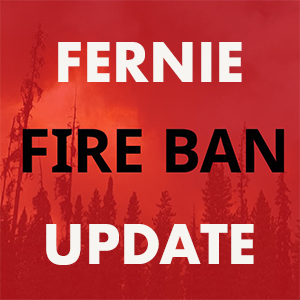 Everything has a breaking point. The trout population of the upper Fording River, who have long suffered toxic water pollution from Teck’s Elk Valley coal mines, not to mention destruction of their habitat, have finally reached their breaking point. Of the adult westslope cutthroat trout in this 60km stretch of river, 90% are gone in just two years, while more than 70% of juvenile fish have disappeared.
Everything has a breaking point. The trout population of the upper Fording River, who have long suffered toxic water pollution from Teck’s Elk Valley coal mines, not to mention destruction of their habitat, have finally reached their breaking point. Of the adult westslope cutthroat trout in this 60km stretch of river, 90% are gone in just two years, while more than 70% of juvenile fish have disappeared.
With thousands of trout having died so quickly, it’s time for our government to wake up and start protecting our rivers. We can’t let Teck keep building a toxic legacy that will pollute the Elk Valley for a thousand years.
 The upper Fording River, near Teck’s coal mines.
The upper Fording River, near Teck’s coal mines.
The Fording River begins high in the Rocky Mountains north of Elkford, above the largest of Teck’s mountaintop-removal coal mines. What begins as pure mountain water quickly turns dangerous as it passes through the mine, with selenium pollution at very high levels, plus hazardous levels of nitrates and dissolved calcite that turns rocky stream bottoms into concrete. As the Fording River flows downstream, smaller tributaries join it from the mountains on either side, many even more dangerously polluted or entirely filled in with a mountain worth of waste rock.
In this section of the Fording River, an isolated population of westslope cutthroat trout make their home, cut off from the rest of the Elk Valley by Josephine Falls. These genetically unique trout are listed under Canada’s Species At Risk Act because of their rarity and tendency to cross-breed with rainbow trout. After the population collapse in the past two years, biologists counted less than 200 adult trout in the upper Fording River, including the area above the mine, and estimate that there are only a few hundred left in total—far less than the thousands they’ve found in previous years.
 A trout with a missing gill plate, a minor deformity that can be caused by selenium, from the Elk River.
A trout with a missing gill plate, a minor deformity that can be caused by selenium, from the Elk River.
What killed the fish?
So what happened? Why did so many trout die? Why are there so many fewer juvenile trout under 2 years old? We don’t know definitively what happened between the westslope population survey in fall 2017 and the survey in the fall of 2019, but it’s highly likely that it has something to do with the coal mines.
Selenium, a toxic form of pollution that leaches out of those valley-filling waste rock piles, is well known to cause reproductive failure in fish of all kinds. Selenium levels have been very high near the Fording River mine, peaking at a hundred times the level considered safe.
More than five years ago, Environment Canada asked the leading expert on selenium pollution and fish, Dr. Dennis Lemly, to study the problem in the Elk Valley. He found that selenium levels in trout were already high enough that half their eggs wouldn’t hatch or would produce fish so deformed that they wouldn’t survive long. Drawing on his experience with fish population collapses due to coal mining elsewhere, Dr. Lemly warned that life was getting more dangerous every year for trout in the upper Fording River. Unless pollution levels were reduced, Dr. Lemly wrote, the entire population could be lost—forever. Since Dr. Lemly’s report, there has only been more and more selenium flowing into the Fording River as the mines have expanded.
But that’s not all. Nitrates, leftover from explosives that have not fully exploded at the mines, are found dissolved in the upper Fording River at dangerous levels—and have been for many years. Dissolved calcite leaches out of the piles of waste rock and then solidifies on the bottom of the Fording River and many of its tributaries, forming an impenetrable layer much like concrete. With the stones on the bottom of the river solidified into one mass, trout can’t use the river bottom for their eggs or as a source of food.
Beyond the water pollution, the mines have destroyed and degraded large areas of trout habitat, from smaller creeks entirely covered by waste rock dumps to rivers running through treeless moonscapes. Because they can’t detect selenium pollution, trout have travelled into settling ponds and other areas at the mines that are even more polluted than the Fording River, putting themselves in even greater danger.
While we don’t know the exact combination of factors that led to this tragic trout population collapse (and we may never know), it’s not a stretch to say that it almost certainly has something to do with the coal mines. That’s why we were disappointed to hear Teck telling the public that maybe it was climate change, predation or natural causes that caused the collapse.
“We don’t know what factors contributed to that (the decline),” Teck said to a Canadian Press reporter. It’s time for Teck to be honest and take responsibility for what’s happening downstream of their mines.
 The Greenhills coal mine, beside the Fording River. Photo by Garth Lenz / ILCP.
The Greenhills coal mine, beside the Fording River. Photo by Garth Lenz / ILCP.
Who will protect our fish?
But what’s even more important is for the BC Government to start taking their responsibility to protect our clean water and fish in the Elk Valley seriously. The water pollution problem has been known for decades and the province first set up a task force to study the problem in 1999. Since then, water pollution levels have gone up by a whole lot. While Teck is building a couple water treatment plants that will treat a small portion of the contaminated water, we’re still no closer to a real long-term solution that will stop water pollution at the source. Any plan that relies on someone to keep operating more than a dozen water treatment plants for a thousand years isn’t a plan at all—it’s a delay tactic to keep coal extraction going and leave the public to clean up the mess later.
It has become clear that the Elk Valley Water Quality Plan, now six years old, isn’t working. The plan puts far too much control of the health of the entire Elk Valley watershed and Koocanusa in Teck’s hands—and they’ve shown they can’t be trusted with our clean water and fish.
Right now, Teck is talking about their newest major expansion, a large area called Castle, right along the most polluted stretch of the upper Fording River. They plan to submit their plans for provincial environmental assessment this year1, with decades of mining and another big jump in the long-term water pollution level in the Fording River on the line. It would be crazy for BC to allow Teck to add more pollution in the upper Fording after this disaster, but Teck tends to get what they want from the BC Government.
We’ve reached a turning point in the Elk Valley. After this fish population collapse, will our BC Government wake up and stop letting Teck further add to a toxic legacy that no one has any idea how to clean up? Or is this merely a sign of things to come downstream in the Elk River and Koocanusa as more mining is approved with no long term plan?
 The Elk River near Fernie.
The Elk River near Fernie.
Header photo: A juvenile westslope cutthroat trout by Micheal Ready / ILCP.
1. Because this is a mine expansion less than 50% the size of the existing mine and not a new mine, the project wouldn’t be subject to federal environmental assessment.
By Lars Sander-Green

























